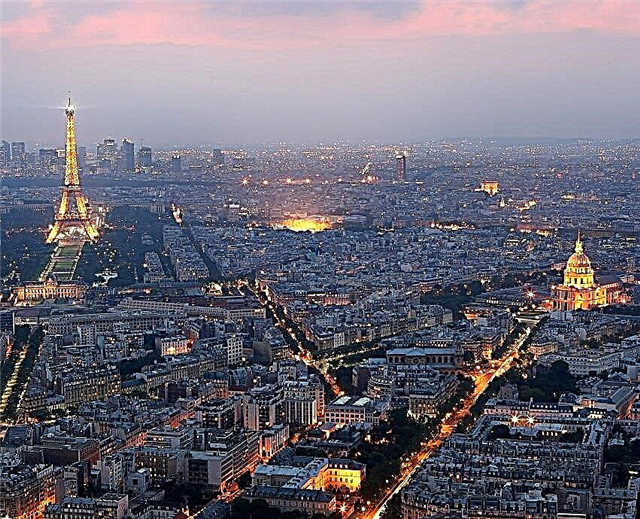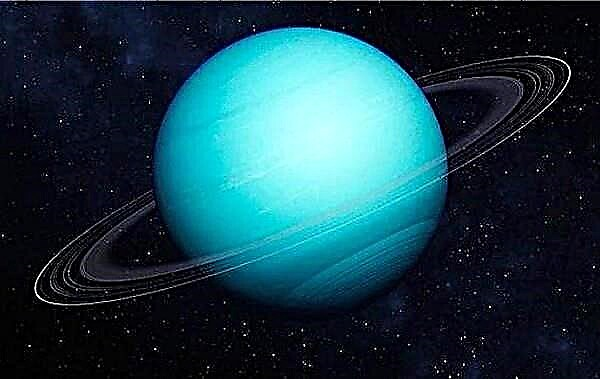Taj Mahal ("Crown of Palaces") - a mausoleum-mosque, located in the Indian city of Agra. It was erected by order of the padishah of the Baburid empire Shah Jahan, in memory of the wife of Mumtaz Mahal, who died in childbirth of her 14th child. Later, Shah Jahan himself was buried here.
Since 1983 the Taj Mahal has been included in the UNESCO World Heritage List. The building, completed in the period 1630-1653, was built by the hands of 20,000 craftsmen. Lahori is considered to be the main designer of the mausoleum, according to other sources, Isa Mohammed Efendi.

Construction and architecture of the Taj Mahal
Inside the Taj Mahal, you can see 2 tombs - Shah Jahan and his wife Mumtaz Mahal. The height of this 5-domed structure reaches 74 m, with one 41-meter minaret at each corner.
An interesting fact is that all the minarets are deliberately rejected in the opposite direction from the mausoleum, so as not to damage it in case of destruction. The walls of the Taj Mahal are lined with translucent marble, which was quarried 600 km from the construction site.
At the same time, on the walls you can see inlay of dozens of gems, including agate and malachite. It is important to note that at different times of the day marble changes its color: at dawn - pink, during the day - white, and under moonlight - silvery.
A 15-kilometer ramp made of rolled soil was used to deliver marble and other building materials. On it, 30 bulls were dragged one block at a time, assigned to a special cart. When the block was delivered to the construction site, it was raised to the desired level using unique mechanisms.
It goes without saying that a lot of water was required to build such a large-scale structure. To ensure a full water supply, the architects used river water, which was delivered to the construction site via a bucket-rope system.
It took about 12 years to build the tomb and platform. The rest of the Taj Mahal, including the minarets, mosque, javab and the Great Gate, were built in a clear sequence for another 10 years.

Building materials were delivered from different regions of Asia. For this, over 1000 elephants were involved. In total, 28 types of gems were used for inlaying white marble, which were brought from neighboring states.
In addition to tens of thousands of workers, 37 people were responsible for the artistic appearance of the Taj Mahal, each of whom was a master of his craft. As a result, the builders managed to build an incredibly beautiful and magnificent building.
The total area of the entire Taj Mahal complex, along with other buildings, had a rectangular shape of 600 x 300 meters. The beautifully polished white marble walls of the mausoleum, adorned with gems, reflected both sunlight and moonlight.
Opposite the structure is a large marble pool, in the waters of which you can see the reflection of the Taj Mahal. The 8-sided burial chamber in the inner hall houses the tombs of Mumtaz Mahal and Shah Jahan.

Islam forbids carefully decorating burial sites. Therefore, the bodies of the spouses were placed in a relatively simple crypt under the inner chamber.
Many symbols are hidden in the design of the complex. For example, on the gates leading to the park, surrounding the mausoleum, verses from the 89th sura of the Koran are carved: “O thou, resting soul! Return to your Lord content and contentment! Enter with My slaves. Enter My Paradise! "
In the western part of the tomb, you can see a mosque, parallel to which there is a guest house (javab). The entire Taj Mahal complex has axial symmetry, with the exception of Shah Jahan's tomb, which was erected after his death.
The complex has a garden with fountains and a 300 m² oblong pool. In the southern side there is a closed courtyard with 4 gates, where mausoleums of 2 more wives of the padishah - Akbarabadi and Fatehpuri were built.
Taj Mahal today
Cracks were recently discovered in the walls of the Taj Mahal. Experts began to immediately establish the causes of their occurrence. After careful research, scientists came to the conclusion that cracks could have appeared as a result of the shallowing of the neighboring river Jamna.
The fact is that the disappearance of Jamna leads to the subsidence of the soil, which leads to the slow destruction of the structure. In addition, the Taj Mahal has recently begun to lose its famous whiteness due to air pollution.

To prevent this, the authorities ordered to expand the park area and stop the work of all polluting enterprises in Agra. The use of coal was banned here, preferring environmentally friendly gas to this type of fuel.
However, despite the measures taken, the mausoleum continues to take on a yellowish appearance. As a result, in order to whiten the walls of the Taj Mahal as much as possible, workers constantly clean them with bleaching clay.
As of today, tens of thousands of tourists (5-7 million per year) come to see the mausoleum every day, due to which the state budget of India is noticeably replenished. Since it is prohibited to drive vehicles with internal combustion engines, visitors have to travel from the bus station to the Taj Mahal either on foot or by electric bus.
An interesting fact is that in 2019, in order to combat excessive tourism, fines were introduced for visitors who remained in the complex for more than 3 hours. Now the mausoleum is one of the New 7 Wonders of the World.
Before visiting an attraction, tourists can visit the official website of the Taj Mahal. There you can find information about the opening hours and ticket sales, find out what you can do and what not, and familiarize yourself with other equally important information.
Taj Mahal Photos

















